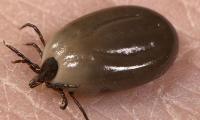HYDERABAD: Majeed Motani, a veteran boat captain from Ibrahim Hydri, Karachi, believes that fishermen were too slow in understanding the damage their practices brought on the marine environment.
“It took more time to make fishermen realise that they have destroyed potential fishing grounds around them, and now they are compelled to catch jellyfish blooms for survival,” he said.
Hardly a few years back, boat crews used to get a headache whenever their nets were filled by jellyfish. They never tried to collect it for commercial purposes, because there was no market to sell it. But now they love to catch jellyfish to sell in the market, Majeed said.
Having around 50 years of experience dealing with boats, crew and seafood trade, he said, “We have lost fish stock because of using larger harmful nets. Now, we have nothing to bring to the market except jellyfish blooms, which our children do not consume.”
Jellyfish bloom for a short period of two months- February 15 to mid-April. After this specific period they disappear instantly. It swims fast with high tides in the season coming to beaches where from the community people catch it for the market.
Akhtar Shaikh, a community activist and small scale trader in Rehri Mayan village, said local fishermen call it langharo. “Previously, they faced difficulty in managing nets after catching jellyfish, but now almost all boats, except larger ones, can be seen engaged in catching this species to earn a little for their survival. Boat crews work hard to catch and sort out for the sell,” he added.
Visibly it was not attractive like common fish species as it has no blood or bone. It has a unique way of living that often causes miseries for boatmen, who follow routine directions for catching fish. Nevertheless, it was a source of income for the community, residing in coastal villages.
Presently, fishermen receive rates, ranging from Rs20 to Rs50 per kg only, depending on the situation. There is a monopoly of traders and certain sea lords (local influential persons).
Rates are set by the sea lords at different creeks. Similarly, they also have domination to illegally force fishermen to sell their product at the meagre rates they have set.
In the past, fishing nets used to get filled with jellyfish, which did not have an attractive market, especially when it came to the nearby creeks, which earlier were known as the potential fishing grounds. The boats of different categories and sizes brought large fish catches, measuring 400kg to 4,000kg at times. Traders at these creeks used to buy directly from the boats.
Now, things have changed drastically. Boats fill up with jellyfish instead of regular commercial fish species. For jellyfish, fishers do not need to carry iceboxes on the boats. It is stored out in the open.
The catch is brought to local factories, established by traders at the jetties near Rehri and Ibrahim Hyderi, where workers deal with the product; first peeling and washing in huge water tanks and then using chemicals for its preservation. They have mechanisms to apply chemicals for export, mainly to China.
Shaikh said there is a network of local traders, who maintain contracts with boat owners, while travelling to islands to buy the catch. Some traders who used to buy crabs and other fish species have now moved to buying jellyfish too.
Nawaz Dablo, another activist, who also deals with jellyfish on a boat, said it was quite different and mostly crew members looked uncomfortable while collecting it on the boats. “We catch jellyfish as we don’t have any other option now. This helps us survive only, as jellyfish are not very lucrative,” he added.
In this situation, when indigenous fish species do not come to traditional fishing grounds in the ocean, only larger boats prefer to move to the open seas for commercial fishing. All small and mid-sized boats catch jellyfish for their business.
Commercial seafood species like shrimps have become rare in the seawater and fishing boats only bring lower volumes of catch to the shores now. This volume barely recovers the cost of travel, fuel, food, and maintenance of the boats.
Not only shrimps and fish species, mud crabs too have disappeared from the islands as well as the mangrove forests, which were natural habitats of these species.
Traditionally, there are different boats known for specific fish catch; like thukri boats used for catching shrimps. Qatra nets are harmful and being used for catching trash fish. Bun is another kind of boat, which catches fish from beaches. All these boats now leave their jetties for catching jellyfish from different directions.
A large number of various types of jellyfish inhabit the oceans, some of which are dangerous too. But according to the fishermen, the white jellyfish they were catching was not harmful. They were handling it on their boats without much ado.
Elderly fishermen fear that increasing jellyfish might have an overall negative impact on fishing, as it means that fish population had declined drastically. For the fisheries sector, this should be an alarming situation as the sector’s revenues were falling.
Locals expressed a lack of awareness about the uses of jellyfish. It is not used in local cuisines and the community people also do not know of its uses abroad. They only collect it from the marine waters for commercial purposes and manage to survive on the meagre earnings.
The picture shows the building of the Securities and Exchange Commission of Pakistan . — The News/FileISLAMABAD:...
A view of a Shell petrol pump with bikers waiting at the fuel station. — Online/FileKARACHI: Shell Pakistan Limited ...
A representational image shows Total Energies employees walking in the Donges oil refinery in Donges, on September 8,...
An undated image of gold bars. — AFP/FileKARACHI: Gold prices in the local market dropped by Rs800 per tola on...
Sweden’s central bank building seen in this undated photo.— Bloomberg News/File Oslo/Frankfurt/London: Sweden’s...
People buy pulses and grains at a wholesale market. — AFP/FileLAHORE: The institutions in developed economies ensure...







